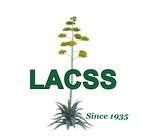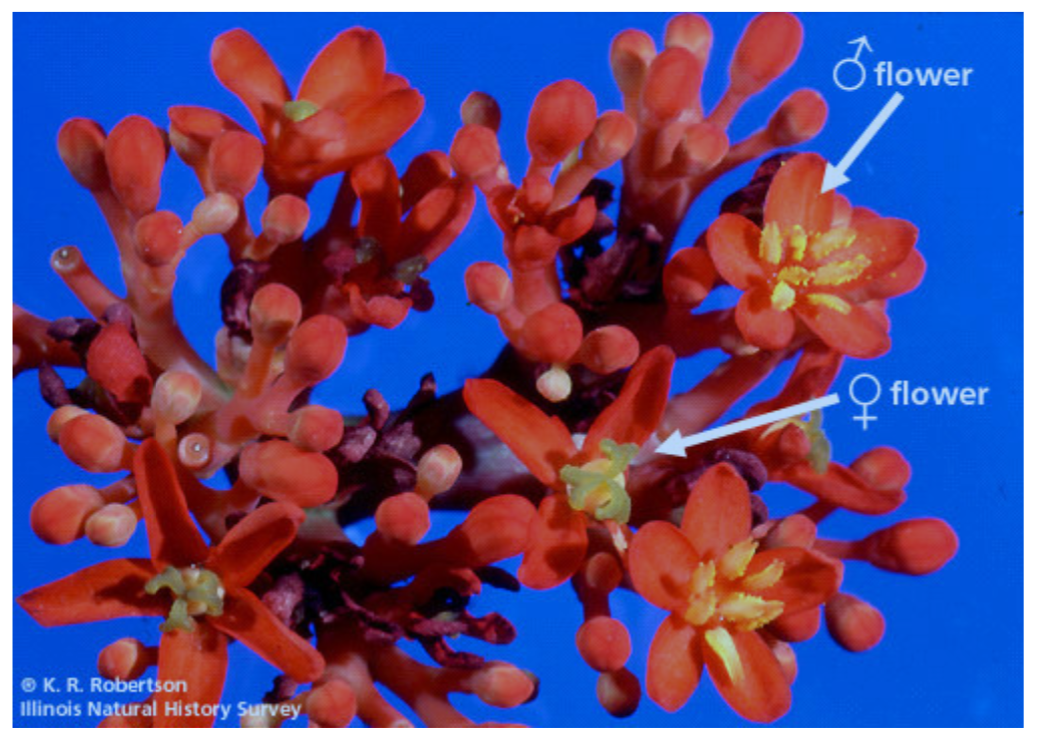PLANT OF THE MONTH Library page 3
serves as a reference library of descriptions of cactus and succulent plants
designated as Plant-of-the-Month genera in the Cactus Chronicle newsletter.
This section will grow as the web master adds information on past and current POM selections.
Los Angeles Cactus and Succulent Society
Los Angeles Cactus and Succulent Society
I
Idria - May 2007
This plant hails from Mexico and Baja California. Idria columnaris is strictly a winter grower, or at least that seems to be the rule and not the exception. Idria is monotypic, meaning that it is the sole representative of the genus.
I. columnaris, sometimes referred to as the "boojum tree" is a slow growing pachycaul that may reach 50 or more feet in habitat. Although often thought of as slow growing, I have seen a 3 year old, reach 2 inches in diameter and 6 inches in height. According to Miles Anderson and Terry Hewitt, I. columnaris can take 25 degrees for a brief period. Although this plant will undoubtedly survive a cold spell in the mid 20s, it tends to set the plant back a bit. Possibly the best remedy would be to give this highly coveted caudiciform daytime warmth in the greenhouse, even if no heat can be provided at night. Grown only from seed, the Idria produces flowers on older specimens and on plants over 6 feet tall.
Courtesy of Blaire Hoover, 3/18/2004
- - - - - - - - - - - - - - - - - - - - back to top
Ipomea - October 2009
Ipomea caudiciform - October 2007
coming soon
- - - - - - - - - - - - - - - - - - - - back to top
L
Lithops - August 2015, April 2009, October 2006
Lithops are intriguing plants that originate from South Africa and Namibia. In habitat they are accustomed to long periods of drought and extremely hot conditions. Popularly known as “living stones” due to their resemblance to polished pebbles, these plants are so well camouflaged in habitat that animals are unable to detect them.
Lithops are actually a pair of leaves that have adapted to their environment in a unique manner. In order to preserve moisture – most plants receive little or no rainfall for extended periods of time – they have lost the typical leaf appearance and instead have evolved a smooth rounded appearance, hence their association with stones or pebbles.
The rounded stone-like appearance also helps protect them as a food source. In habitat, Lithops are well adapted also because they imitate the surrounding colors and soil texture. They may be virtually invisible at times.
Most lithops produce flowers, typically in the spring or early fall. The yellow and white flowers are daisy-like and appear in the top of each lithop head as shown in photo at the left.
Lithops are available from many cactus and succulent nurseries and can be capable grown with a little care and concern. The three biggest problems associated with growing lithops are overwatering, poor ventilation, and impatience. Place your collection in a south facing locaton under protected conditions (greenhouse or window sill).
Make sure that there is adequate air flow and lots of light. The ideal spot for growing lithops is in a protected area that is south facing. Lithops are notoriously slow growing, so don’t expect your plant to grow quickly.
Make sure that you stop watering your plants sometime in late fall til mid spring (when the nights start to warm up). During the spring, lithops will generate a new body, consuming the moisture and nutrients from the old “leaves”
-- Steven Frieze, 2009
Photos in Cactus Chronicle:
Lithops pseudotruncatella v. elisabethiae,
- - - - - - - - - - - - - - - - - - - - back to top
Lobivia - April 2018, May 2010, May - June 2008, June 2007
Lobivia densispina grows in clusters from a large tap root. The spines form a close network that shades and in many cases almost hides the plant body. The flowers vary from yellow to orange and red.
Lobivia ferox almost looks like Thelocactus. It is globular, usually singular, and grows to 8 inches in diameter. It has.
-- By Tom Glavich September 2004, Edited by Steve Frieze May 2010
Photo in Cactus Chronicle:
Lobivia densispina
See Echinopsis for more information
- - - - - - - - - - - - - - - - - - - - - back to top
J
Jatropha - October 2018, July 2007
There are two types of flowers in the Euphorbiaceae. The genus Jatropa has "normal" flowers with 5 sepals; petals are absent. The flowers are imperfect and the plants are monoecious. Both male and female flowers are seen in this inflorescence.
Photo by K. R. Robertson and D. L. Nickrent from plants cultivated at the University of Illinois.
- - - - - - - - - - - - - - - - - - - - back to top


